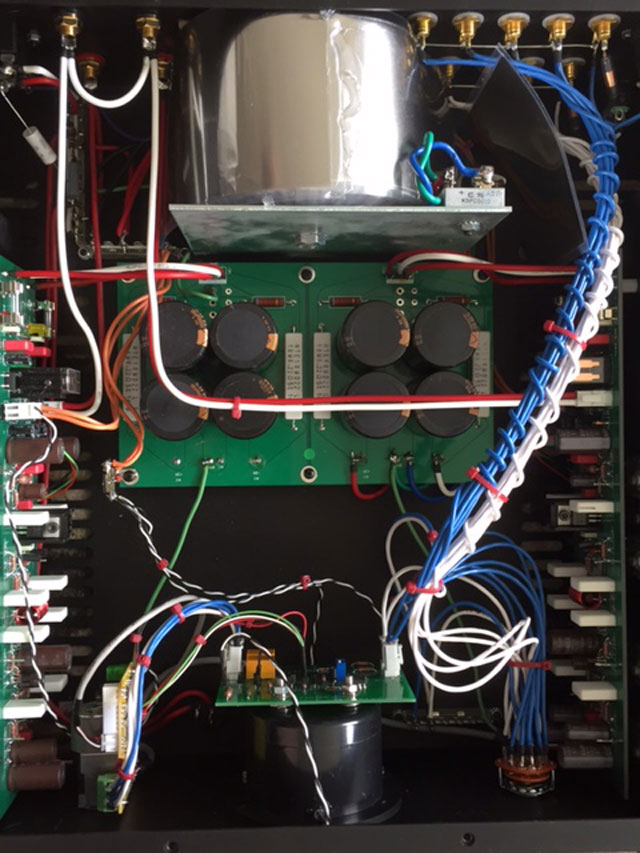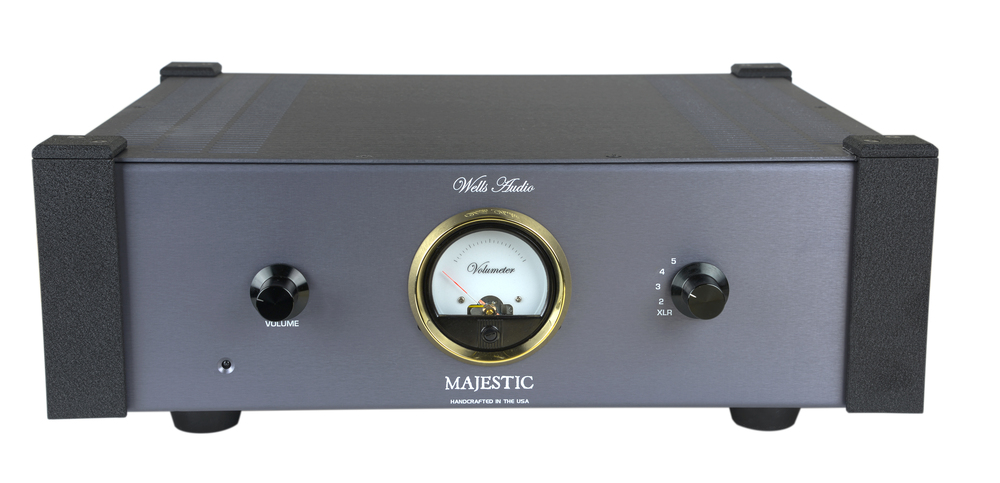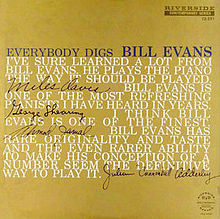Wells Audio Majestic Integrated Amplifier

Sculpting the Majestic
 Asked in what manner he painted his famous colored circle paintings, legendary modern artist Damien Hirst replied, “Yes, Rachel is brilliant, isn’t she?!” I’m paraphrasing here, but you see Mr. Hirst was referring to the precision of his former chief assistant Rachel Howard’s work because, by his own admission, he himself can’t really paint. No; Damien Hirst can no more paint all those precisely formed, neatly arrayed colored circles that comprise his signature wall-art pieces than Jeff Koons, the equally well-known contemporary sculptor, can single-handedly fashion a four story high, fetchingly cute West Highland terrier out of stainless steel, soil and flowers. But that doesn’t stop either of them from err… ‘creating’ such marvelous works of art, now does it? And it doesn’t stop ‘audio designer’ (that’s what he calls himself) Jeff Wells from creating his Wells Audio branded audio equipment.
Asked in what manner he painted his famous colored circle paintings, legendary modern artist Damien Hirst replied, “Yes, Rachel is brilliant, isn’t she?!” I’m paraphrasing here, but you see Mr. Hirst was referring to the precision of his former chief assistant Rachel Howard’s work because, by his own admission, he himself can’t really paint. No; Damien Hirst can no more paint all those precisely formed, neatly arrayed colored circles that comprise his signature wall-art pieces than Jeff Koons, the equally well-known contemporary sculptor, can single-handedly fashion a four story high, fetchingly cute West Highland terrier out of stainless steel, soil and flowers. But that doesn’t stop either of them from err… ‘creating’ such marvelous works of art, now does it? And it doesn’t stop ‘audio designer’ (that’s what he calls himself) Jeff Wells from creating his Wells Audio branded audio equipment.
Actually, to hear Wells tell it, the gulf between the ‘creative talent’ and the engineering talent isn’t quite so broad over at Wells Audio. “The ideas are all mine,” says Jeff. “Scott Frankland helps me with the technical stuff like better grounding schemes and circuit changes to improve noise.” He continues, “Scott is also my production house and so organizes parts, etc. He’s also [responsible for] warranty repair and final testing of everything before it goes out to make sure every piece meets or beats the specs.” You know what that means? It means that if you have a problem with a Wells Audio product, don’t blame the man whose name is on the amp. Blame Rachel! I mean, Scott!
Regarding the specifics of their working relationship, Jeff explains “I would go to Scott if I had an idea for a change to a product for example, and he would let me know the values for the necessary new parts. On a new design, I tell him what I like and what circuit I have in mind and he would do the actual schematic and calculate the values on the parts to build. If I built it and I didn’t like the sound, we would discuss changes based on what direction I want to go in and so forth.”
And just what types of designs does audio designer Jeff like? What are his audio ideals? Well, he likes to call his amplifier designs “convergence amplifiers; ones with the best tonal qualities of a tube amp but with the drive and ease of operation of solid-state.”


Creating such a device sez Jeff, requires exacting circuit layouts, special attention to noise attenuation in the signal path and, to quote Jeff via recent iPhone session, “massive energy storage. There’s a friggin’ huge transformer in there. That’s the difference between our amps and these new class D ones etc. There’s no real energy storage and release going on in them and that makes them unable to do what our product does.” To wit, backed by the engineering muscle of Mr. Frankland, and informed by many years of personal experience, both listening to and retailing audio gear to audiophiles-at-large from his California-based bricks and mortar audio store, ‘audio designer’ Jeff Wells is very confident he has for years been hard at work designing and producing the mythical beast audiophiles have long sought, even if they didn’t in fact know they were hunting for it; the elusive ‘solid-state tube amp.’ Has he succeeded? Is the Wells Audio Majestic in fact a four story high floral dog?
Ergonomics, economics and design
Speaking of sculpture, despite its name, the majesty of the Wells Audio Majestic really finds aesthetic expression in its simplicity. The chunky retro looks, replete with old-school-looking ‘Volumeter’ glowing centrally (blue for ‘standby’, white for ‘on’) within a round gold ‘porthole’ of sorts, lend this 150 watt per side, 3499.00 dollar integrated ($3599.00 with new updated remote) a regal minimalist ‘nautical’ aesthetic. In truth, the ‘Volumenter’ may look old school, but per Jeff Wells, it is a “remarkable device that we designed to track the rise and fall of the volume level on an analogue meter so that the user has a better idea of where the the volume is in relation to the attenuator position.” Ah; the ‘audio designer’ strikes again!

In any case, it was this aesthetic minimalist ‘majesty’ that drew me to request a review sample. I figured if it looked that cool, how bad could it sound? Okay, so I was also influenced by all the over-the-top fabulous reviews I’ve read of some other current Wells Audio offerings that long pre-date the Majestic; amplifiers such as the lauded Akasha and the even more exclusive and pimped-out Inamorata. One guy really likes it? That’s good. But if reviewers seem to be buying their review samples regularly, now that’s gotta mean something.
Jeff Wells tells me the Majestic is “based on those amplifiers (Akasha and Inamorata) and is maybe 85 percent of them sonically, assuming you have a really good preamp to pair with them.” He added the Majestic employs very similar amplifier design elements in terms of circuit topology and a similarly extremely beefy power supply for massive current storage, though utilizes fewer bespoke level capacitors and resistors and none of the ‘quantumly-magical’ Bybee products he’s so fond of using in his pricier efforts as standard. It makes use of a high quality motorized Alps potentiometer as a passive means of attenuation.
Yes sir, Jeff Wells is indeed justly proud of his basic baby and should you want to throw more money in his general direction, he’ll be happen to custom tailor an uprated Majestic just for you. Operationally, the Wells is incredibly quiet; almost zero hiss n’hum, with a jet black background and like no noise floor. In fact, it may be the quietest amp I’ve ever had in my home, and I think it’s in part this mechanical ‘quietude’ that’s a major contributing factor to its considerable sonic verisimilitude (God I’ve been longing to use that word in a review:)
In sonics we trust…
 For starters, pianist Dinara Klinton’s album of Liszt’s Transcendentally difficult Transcendental Etudes shook me; almost literally. Her beautifully recorded and stunningly well played album was one of the first I streamed into the Majestic and I was pretty well stunned at the sheer solidity and weight the grand piano had, particularly in track 4, ‘Mazeppa’; Wow! Compared with many prior integrated amps I’ve had in my home and even as compared with several (much) high-powered Class D efforts, the Wells’ sheer sonic weight and density were stirring. You could hear the big soundboard reverberating as Klinton leaned in on the lower end of the spectrum, generating torrents of finely dynamically graded mid and upper bass, which contributed significantly to the feel of being in the presence of a looming, viciously played grand piano in a smaller concert venue. In point of fact, so good was the the Wells’ portrayal of this album that with the volume set just right for my admittedly small to moderately sized room, I declared in my listening notes “I have nearly never heard my stereo (anyone’s?) produce such a visceral/corporeal experience of the presence of a grand piano being leaned into by its master outside of an actual grand piano being leaned into by its master.” Seriously. This was no longer high end audio; it was music. I smiled broadly and honestly felt like standing up and applauding after the album finished. No reviewer BS. Superb! Now that’s what I call ‘off to a good start!’
For starters, pianist Dinara Klinton’s album of Liszt’s Transcendentally difficult Transcendental Etudes shook me; almost literally. Her beautifully recorded and stunningly well played album was one of the first I streamed into the Majestic and I was pretty well stunned at the sheer solidity and weight the grand piano had, particularly in track 4, ‘Mazeppa’; Wow! Compared with many prior integrated amps I’ve had in my home and even as compared with several (much) high-powered Class D efforts, the Wells’ sheer sonic weight and density were stirring. You could hear the big soundboard reverberating as Klinton leaned in on the lower end of the spectrum, generating torrents of finely dynamically graded mid and upper bass, which contributed significantly to the feel of being in the presence of a looming, viciously played grand piano in a smaller concert venue. In point of fact, so good was the the Wells’ portrayal of this album that with the volume set just right for my admittedly small to moderately sized room, I declared in my listening notes “I have nearly never heard my stereo (anyone’s?) produce such a visceral/corporeal experience of the presence of a grand piano being leaned into by its master outside of an actual grand piano being leaned into by its master.” Seriously. This was no longer high end audio; it was music. I smiled broadly and honestly felt like standing up and applauding after the album finished. No reviewer BS. Superb! Now that’s what I call ‘off to a good start!’
 Traveling on across time and genre with the Majestic, I convinced myself that anyone who doesn’t believe in high end audio should listen to ‘Mood Indigo’ of the August Love Song album with Heather Masse and saxophonist Roswell Rudd [streamed through Audirvana+ via Tidal]. On a great system, for nearly five minutes you non-believers (read: owners of dad’s old receiver and lamp cord) will be forced to suspend disbelief as you commune with the complex bottle of aged sonic Laphroaig that is a smoke-voiced Heather Masse standing next to a master of the sax. With the Wells Audio Majestic, if the rest of your system is up to it, you will listen to her quietly drawing breath in between the spinning of long, luxurious phrases which for all intents and purposes, she could be trying out on you in your living room to see how it’ll go that night at the lounge. “Whadya think of this one, David?” I’m almost sure I heard that from the left speaker…
Traveling on across time and genre with the Majestic, I convinced myself that anyone who doesn’t believe in high end audio should listen to ‘Mood Indigo’ of the August Love Song album with Heather Masse and saxophonist Roswell Rudd [streamed through Audirvana+ via Tidal]. On a great system, for nearly five minutes you non-believers (read: owners of dad’s old receiver and lamp cord) will be forced to suspend disbelief as you commune with the complex bottle of aged sonic Laphroaig that is a smoke-voiced Heather Masse standing next to a master of the sax. With the Wells Audio Majestic, if the rest of your system is up to it, you will listen to her quietly drawing breath in between the spinning of long, luxurious phrases which for all intents and purposes, she could be trying out on you in your living room to see how it’ll go that night at the lounge. “Whadya think of this one, David?” I’m almost sure I heard that from the left speaker…
‘Bewitched, Bothered and Bewildered’ from Ms. Masse’s album with Dick Hyman Lock My Heart [streamed through A+ via Tidal] is simply mesmerizing. Heather and Dick and Jeff (Wells) team up and it’s just goosebumps; the tone and tonal density in my system is just perfection. Speakers disappear. Time stops. Kittens frolic. Rabbits mate. You get the idea. On ‘I Got it Bad and That Ain’t Good’ from the same album, you can hear the hammers strike the upper octave keys of the piano and the notes begin and then linger as the vibrations hang around the acoustic space for a time and then bleed into the overtones of the next individually struck note. It’s like someone’s playing the bells; but no one is. Remarkable.
 This ‘piano as lingering bells’ effect was taken to sonic extreme on the Bill Evans track Piece Peace as recorded on “Everybody Digs Bill Evans” [streamed via Tidal through Audirvana+]. In this meditative solo piano piece, Evans gives precedence to the lingering overtones and echoes of the lightly struck notes and chords throughout as opposed to their fundamentals, and via the Wells, each fundamental tone dies into its overtones and hangs around looooong after Evans has struck the next key. Notes and overtones thereof jostle and fade into one another and hang around for seconds on seconds before dying away into the ether. Sure, other amps in my experience have let these effects happen, but I’ve never heard the whole harmonic kaleidoscope conveyed quite so well as via the Tekton/Wells combination. Over the next few listening sessions, The Majestic increasingly compelled me to believe the journey had meant something damn it and had maybe even, perish the thought, ended…for now(!?)
This ‘piano as lingering bells’ effect was taken to sonic extreme on the Bill Evans track Piece Peace as recorded on “Everybody Digs Bill Evans” [streamed via Tidal through Audirvana+]. In this meditative solo piano piece, Evans gives precedence to the lingering overtones and echoes of the lightly struck notes and chords throughout as opposed to their fundamentals, and via the Wells, each fundamental tone dies into its overtones and hangs around looooong after Evans has struck the next key. Notes and overtones thereof jostle and fade into one another and hang around for seconds on seconds before dying away into the ether. Sure, other amps in my experience have let these effects happen, but I’ve never heard the whole harmonic kaleidoscope conveyed quite so well as via the Tekton/Wells combination. Over the next few listening sessions, The Majestic increasingly compelled me to believe the journey had meant something damn it and had maybe even, perish the thought, ended…for now(!?)
My favorite modern era recording of Beethoven’s 4th piano concerto is Paul Lewis’s version with the BBC Symphony Orchestra as conducted by Jiri Belohlavek [Streamed via A+ through Tidal]. Through the Wells, the stage is huge, both in width and depth and the string tone is really among the best I’ve heard in my home; positively silky and glowing. The dynamics here are handily dispatched and the Majestic takes the ebbs and flows in stride, rendering in heartbreaking fashion the plaintive whispers of Lewis’s solo playing when the strings die away and then going by finely graded degree to scary full roar in the forte sections. In other words; micro and macrodynamics? Check plus!
Introducing PWaD
Yes, PWaD! As in “I have not heretofore heard this degree of PWaD from any other amplifier.” PWaD? Oh okay, I’ll explain. Pressure Weight and Density. Yeah; I made it up after I heard the Wells. Hopefully it’ll catch on and I’ll get royalties from Webster’s just like the PRaT guy.
So a coinage yes, but pressure, weight and tonal density are exactly what the the Majestic, more so than most any previous amplifier in my experience, lets you sense. PWaD is manifested musically by things like just how firmly or lightly violist David Aaron Carpenter is pressing on his viola strings during Kraus’s concerto for viola and cello in C minor and by the sheer physical presence and monumental thunder the Majestic brings to the aforementioned Dinara Klinton’s grand piano as she, well… thunders through the fiery fourth Liszt etude on her aforementioned Transcendently played Transcendental etudes album.
PWaD is the difference between a pretty little disembodied ‘image’ of a musician and their almost-corporeal presence in-room as they ply their instrument, moving deftly through its dynamic range.
Building on the perceived musical ‘reality’ PWaD helps create, it was my perception that the Majestic didn’t do ‘imaging’ per se; it did ‘musicians playing in a venue together.’
For example, the class D Atsah hypex monos I recently reviewed exceeded the Wells in ‘imaging capabilities’ by a smidge, especially as regards the dimension of width. Though depth was comparable, when allowed by the recording, it was not uncommon with the Atsah’s for the image width to stretch several feet to either side of the loudspeakers.The Wells maybe didn’t quite expand things to that degree, but with the Wells in session, it was definitely harder to focus on such relative sonic trivialities like ‘imaging’ at all. Anne-Sophie Mutter and Lambert Orkis are playing Beethoven on one of their joint Beethoven violin sonata albums, and the recorded tone is fantastic and the instruments just exist in space near one another, as they would if you were in a small concert hall in a Manhattan museum hearing them play. It’s positively realistic. You’re not thinking ‘Anne is right there and Lambert is right over here.’
Is this how a 30 thousand dollar DarTZeel sounds? Dunno. What’s worse, for the sake of DarTZeel owners everywhere, I truly hope so!
Where the Wells exceeds the Atsah’s, and just about every other amp, class D or otherwise, I’ve heard in my home set up, is physical presence; beef on the hoof. This is not a mercurial sound with endless detail; it’s a wall of sound (hey; is that taken!?) that’s right there and physical. See? PWaD!!
The dynamics the Wells is capable of are pretty friggin’ startling. Whisper quiet to thunderous in an easy lope; no stress, no strain, no congealing. Just effortless soft to loud, and on to louder and loudest. In fact, I think the Wells is among the most dynamic amplifiers I’ve ever heard. Some amps let the music get a bit louder; the Majestic seems to do that in a very graduated fashion, with like 50 different levels rather than 5.
If the class D Atsah’s I recently reviewed are a Porsche, (light, fast, handles like a go cart), the Majestic is a Bentley or a Rolls; plush yet responsive ride with eminent power beneath a classy, quiet, refined exterior.
Comparative Literature and Criticisms
I agree with one other on-line reviewer who wrote that the standard puny plastic remote control seems an afterthought (Note: Jeff Wells says they are now offering an upgraded remote for an additional 100 bucks). Also, the front meter LEDs are too bright, but they look wayyyyy cool, so there’s that. I should also point out some might call the Wells tonally warm. I’d call its tonal signature ‘natural warmth.’ It is definitely not bright. I’d say it’s the amplifier equivalent of a Daedalus speaker or a Modwright preamp (I’ve owned both); there is a bit of warmth in the sound, but it‘s so well balanced that it ends up a feature of the overall sonics rather than a detractor from them or a tonic for other tonal issues. I’d go further and say the Wells is the least ‘electrical-sounding’ electrical device I’ve ever used. For example, I loved the 8 watt Elekit 300B tube amp, but by comparison with the Majestic, both it and my Croft integrated sound like extremely musical electrical amplification devices; superb ones, actually. But the Wells simply has altogether fewer trappings of the sound of an ‘electrical component amplifying a musical signal.’
Don’t get me wrong; I’m not saying it’s a ‘straight wire with gain.’ As I say, I do think there’s that bit of warmth; a bit of a classical ‘tube amp signature’ and that the tonal ‘center of gravity’ is the midrange/upper bass. It could also do with maybe a shade more ‘clarity’ or lucidity and perhaps too the extreme top is slightly softer than I’ve heard more ‘clinical’ components convey. Ask me if I can bring myself to get up off dead-center from the couch to care. (Hint: no). The rest of the sonic package? Well, you’ve got to have listened to a lot of amplifiers to understand just how good an integrated amp the Wells Majestic is.
In that it majors in Pressure, Weight and Density (PWAD) and minors in poetics, it may not initially ‘wow’ you with some particular sonic firework or other, but gradually I came to feel the Majestic was, in many regards, the finest integrated amplifier I’ve ever heard, and over the past 30 years of listening, I’ve heard quite a few.
Of course, this sum total includes both solid state and tube amps, whose best virtues it does indeed seem to combine effortlessly. Yes, the Wells amps have been called ‘convergence’ amplifiers by others (Jeff Wells included) in that they are the singular expressions of the best parts of tube and solid-state sound. I am inclined to agree with this one word synopsis and yes, ‘convergence’ is definitely the word I would use.
Should you buy this amplifier?
From its very first days in my clutches, bright porthole ‘Volumeter’ all aglow, the Majestic’s ability to create a sense of ‘step right up! Musical event happening right here and right now!’ was pretty much unparalleled in my home. It’s kind of cool; you anticipate a musical ‘happening’ almost like a concert about to start when you sit down to listen. The downside? Well, ummm, ‘background music’ is really not a thing anymore. It’s as if the Majestic forces you to pay attention; or else! When I tried to listen for qualities such as staging, detail, bass etc, I most often just ended up just listening. I’d say that compared with the most detailed amps I’ve heard, like the Atsah, there is slightly less, though this if anything enhanced the illusion of listening to musicians at a venue rather than the reality of a recording on a couch in your underwear (okay MY underwear). Also, remember I listen mostly to jazz, classical and opera at lowish to medium-ish levels via relatively efficient speakers. So if you’re a heavy metal guy or classic rock guy with a massive listening room and inefficient home theater tower speakers or huge panel speakers, you can certainly take my musings with a grain of salt. Everyone else should believe me implicitly and without hesitation and call or email Jeff Wells immediately or better yet, Mark Sossa at wellpleasedav.com, a solid audio citizen who got me in touch with Jeff, thereby facilitating this review. And Yes! I am strongly considering buying the Wells Audio Majestic to use as my new reference amp. In so doing though, it means I’d also be committing to paying a furniture repairman to modify my mid-century media console (which I similarly love) in order to accommodate it, because currently, it just barely doesn’t fit inside!
To consider paying hundreds of dollars for furniture modifications just to accommodate a piece of audio gear?! Never would I have done so before and that can only mean one thing; true love.
Jeff Wells, I love this amplifier.
I bid you peace.


david abramson
Specifications:
• Retail price: 3599.00 w/updated remote
• 150 wpc at 8 ohms
• Signal-to-Noise Ratio: -103 db, reference level full power output
• Total Harmonic Distortion (THD):
•
• Gain 30 db
• Input Impedance: 50k Ohms
• Damping factor: 200, reference 8 Ohms nominal
• Power Consumption: 120 Watts idle, 350 Watts maximum
• Inputs: 4 pair RCA unbalanced 1 pair XLRs balanced
• Outputs: 1 pair of fixed outputs; 5-way binding posts per channel
• Operating Voltage: 120V, 220V, 230V, 240V at 50 or 60 Hz
• Dimensions: 17 in. W X 5 in. H X 16.5 in. D
• Shipping weight 35 pounds
Website: www.wellsaudio.com
Stereo Times Masthead
Publisher/Founder
Clement Perry
Editor
Dave Thomas
Senior Editors
Frank Alles, Mike Girardi, Russell Lichter, Terry London, Moreno Mitchell, Paul Szabady, Bill Wells, Mike Wright, and Stephen Yan,
Current Contributors
David Abramson, Tim Barrall, Dave Allison, Ron Cook, Lewis Dardick, John Hoffman, Dan Secula, Don Shaulis, Greg Simmons, Eric Teh, Greg Voth, Richard Willie, Ed Van Winkle, Rob Dockery, Richard Doran, and Daveed Turek
Site Management Clement Perry
Ad Designer: Martin Perry





Be the first to comment on: Wells Audio Majestic Integrated Amplifier